The Origin of Overpressure in the Pinghu Tectonic Zone of Xihu Depression and Its Relationship with Hydrocarbon Accumulation
Abstract
:1. Introduction
2. Geological Setting
3. Research Methods
4. Distribution of Overpressure Measured via DST (Drill Stem Test)
5. Compaction of Mudstone
5.1. Mudstone Deorganic Compaction Correction
5.2. Compaction Law of Mudstone
5.2.1. Relationship between Acoustic Travel-Time and Burial Depth
5.2.2. Relationship between Acoustic Velocity and Vertical Effective Stress
6. Origin of Overpressure
6.1. Kongqueting Area
6.2. Wuyunting Area
6.3. Baoyunting Area
6.4. Pinghu Area
7. Relationship between Overpressure and Hydrocarbon Accumulation
7.1. Relationship between Hydrocarbon Distribution and Overpressure
7.2. Relationship between Overpressure and Reservoir Physical Properties
7.3. Relationship between Hydrocarbon Charge and Overpressure
8. Conclusions
- The distribution characteristics of formation pressure measured using the DST show that in the vertical direction, overpressure is mainly located in the lower section of the Pinghu Formation, with a pressure coefficient in the 1.1–1.7 range and a pressure relief feature. On the plane, the pressure coefficient in the Pingzhong area is higher than that in the Pingbei area.
- The compaction and loading laws of mudstone were studied based on organic matter correction. It was identified that under the main control of the sedimentation rate, there are three types of acoustic velocity–effective stress curves of mudstone in the study area. The main causes of abnormally high pressure in the research area are undercompaction and fluid expansion. The fluid expansion mechanisms include the overpressure transmission and hydrocarbon charging within the reservoir as well as the hydrocarbon generation pressurisation and overpressure transmission within the source rock. The formation mechanism of overpressure slightly varies among the different layers.
- The relationship between overpressure and hydrocarbon distribution shows that the hydrocarbons are more enriched in the overpressure layers than in the relief layers. In the surge section of kaolinite, under the action of fluid pressure, kaolin migrates and enriches toward the low-pressure areas, resulting in a decrease in the porosity in low-pressure areas and preservation of the pores in high-pressure areas. The evolution of fluid pressure can be divided into two stages. The first stage mainly involved pressurisation. The second stage included both pressurisation and pressure relief. Both stages were in the period of hydrocarbon accumulation. Both pressurisation and pressure relief are the driving forces for hydrocarbon charging.
Author Contributions
Funding
Data Availability Statement
Conflicts of Interest
References
- Dou, X.; Zheng, H.Y.; Jiao, X.Q. Abnormal pressure and hydrocarbon accumulation. Earth Sci. Front. 1995, 29, 19–23. [Google Scholar]
- Zha, M.; Qu, J.X.; Zhang, W.H. The relationship between overpressure and reservoir forming mechanism. Pet. Explor. Dev. 2002, 29, 19–23. [Google Scholar]
- Snarsky, A.N.; Freiberger, F.C. Die primare Migration des Erdols. Freib. Forschungsch 1962, 123, 63–73. [Google Scholar]
- Hubbert, M.K.; Willis, D.G.W. Mechanics of hydraulic fracturing. AAPG Memoir 1972, 18, 153–163. [Google Scholar] [CrossRef]
- Hubbert, M.K. The Theory of Ground-Water Motion. J. Geol. 1940, 48, 785–944. [Google Scholar] [CrossRef]
- Wang, W.Y.; Pang, X.Q.; Wu, L.Y.; Chen, D.X.; Huo, Z.P.; Pang, Y.; Chen, D. Pressure distribution features of deep and middle-shallow hydrocarbon reservoir in global oil and gas-bearing basins. Acta Pet. Sin. 2015, 26, 194–202. [Google Scholar]
- Fan, C.Y.; Wang, G.; Wang, Z.L.; Han, X.J.; Chen, J.; Zhang, K.L.; Zhang, B.S. Prediction of multiple origin overpressure in deep fold-thrust belt: A case study of Kuqa subbasin, Tarim Basin, northwestern China. AAPG Bull. 2021, 105, 1511–1533. [Google Scholar] [CrossRef]
- Hermanrud, C.; Wensaas, L.; Teige, G.M.G.; Vik, E.; Bolas, H.M.N.; Hansen, S. Shale porosities from well logs on Haltenbanken (offshore mid-Norway) show no influence of overpressuring. In Abnormal Pressures in Hydrocarbon Environments; AAPG Memoir; Law, B.E., Ulmishek, G.F., Slavin, V.I., Eds.; American Association of Petroleum Geologists: Tulsa, OK, USA, 1998; Volume 70, pp. 65–85. [Google Scholar]
- Bowers, G.L. Pore pressure estimation from velocity data; accounting for overpressure mechanisms besides undercompaction. SPE Drill. Complet. 1995, 10, 89–95. [Google Scholar] [CrossRef]
- Fan, C.Y.; Wang, Z.L.; Wang, A.G.; Fu, S.T.; Wang, L.Q.; Zhang, Y.S.; Kong, H.Y.; Zhang, X. Identification and calculation of transfer overpressure in the northern Qaidam Basin, northwest China. AAPG Bull. 2016, 100, 23–39. [Google Scholar] [CrossRef]
- Tingay, M.R.P.; Morley, C.K.; Laird, A.; Limpornpipat, O.; Krisadasima, K.; Pabchanda, S.; Macintyre, H.R. Evidence for overpressure generation by Kerogen to gas maturation in the northern Malay Basin. AAPG Bull. 2013, 97, 637–672. [Google Scholar] [CrossRef]
- Chen, H.L.; Tang, X.Y. A study of clay compaction and primary migration of oil and gas. Oil Gas Geol. 1981, 2, 114–122. [Google Scholar]
- Yang, C.Y.; Sun, P.; Tian, C.; Zhang, S.P.; Jiang, Y.M. Distribution and Formation Mechanism of Overpressure in Pinghu Formation, Xihu Sag, East China Sea. Offshore Oil 2013, 33, 8–12. [Google Scholar]
- Wang, L.; Yang, R.; Sun, Z.; Wang, L.; Guo, J.; Chen, M. Overpressure: Origin, Prediction, and Its Impact in the Xihu Sag, Eastern China Sea. Energies 2022, 15, 2519. [Google Scholar] [CrossRef]
- Du, M.D.; Ye, J.R.; Wu, J.F.; Shan, C.; Lei, C. Overpressure Formation Mechanism in Xihu Depression of the East China Sea shelf basin. Earth Sci. 2017, 42, 119–129. [Google Scholar]
- Su, A.; Du, J.M.; He, C.; Yu, Y.; Wang, C.W.; Luo, J.Y. Overpressure and hydrocarbon accumulation in Pinghu structural belt in Xihu Depression, East China Sea. J. Cent. South Univ. 2017, 48, 742–750. [Google Scholar]
- Zhu, X.J.; Chen, J.F.; Li, W. Hydrocarbon generation potential of Paleogene coals and organic rich mudstones in Xihu sag, East China Sea Shelf basin, offshore eastern China. J. Pet. Sci. Eng. 2020, 184, 106450. [Google Scholar] [CrossRef]
- Tang, X.J.; Jiang, Y.M.; Zhang, P.J.; Wang, C.; He, X.J.; Yang, M. Fault characteristic and its control on traps of fault structural layer in the northern Pinghu Slope Belt, Xihu Sag, East China sea shelf basin. Mar. Geol. Front. 2019, 35, 34–43. [Google Scholar]
- Yang, C.H.; Zeng, G.D.; Li, S.Q.; Liang, R.B. Fault development characteristics and hydrocarbon accumulation in Pingbei area of Xihu Sag, East China Sea. Pet. Geol. Exp. 2014, 36, 64–69+82. [Google Scholar]
- Su, A.; Chen, H.H.; Lei, M.Z.; Li, Q. Paleo-pressure evolution and its origin in the Pinghu slope belt of the Xihu Depression, East China Sea Basin. Mar. Pet. Geol. 2019, 107, 198–213. [Google Scholar] [CrossRef]
- Jiang, W.B. Study on Reservoir Formation Characteristics of the Central Inversion Tectonic Belt in Xihu Sag, East China Sea; China University of Geosciences: Beijing, China, 2012. [Google Scholar]
- Zhang, Z. Features of Formation Pressure and Its Relationship with the Oil and Gas Distribution in the PH Structural Belt of Xihu Sag; Chengdu University of Technology: Chengdu, China, 2018. [Google Scholar]
- Fan, C.Y.; Wang, G. The significance of a piecemeal geometric model of mudstone compaction: Pinghu Slope, Xihu Depression, Eastern China. Mar. Pet. Geol. 2021, 131, 105138. [Google Scholar] [CrossRef]
- Li, C.; Zhang, L.K.; Luo, X.R. A quantitative method for revising abnormally high sonic data in rich-organic rock during compaction study. J. China Univ. Pet. 2016, 40, 77–87. [Google Scholar]
- Magara, K. Compaction and Migration of Fluids in Miocene Mudstone, Nagaoka Plain, Japan. AAPG Bull. 1968, 52, 2466–2501. [Google Scholar]
- Hu, M.Y.; Shen, J.; Hu, D. Reservoir characteristics and its main controlling factors of the Pinghu Formation in Pinghu structural belt, Xihu Depression. Oil Gas Geol. 2013, 34, 185–191. [Google Scholar]
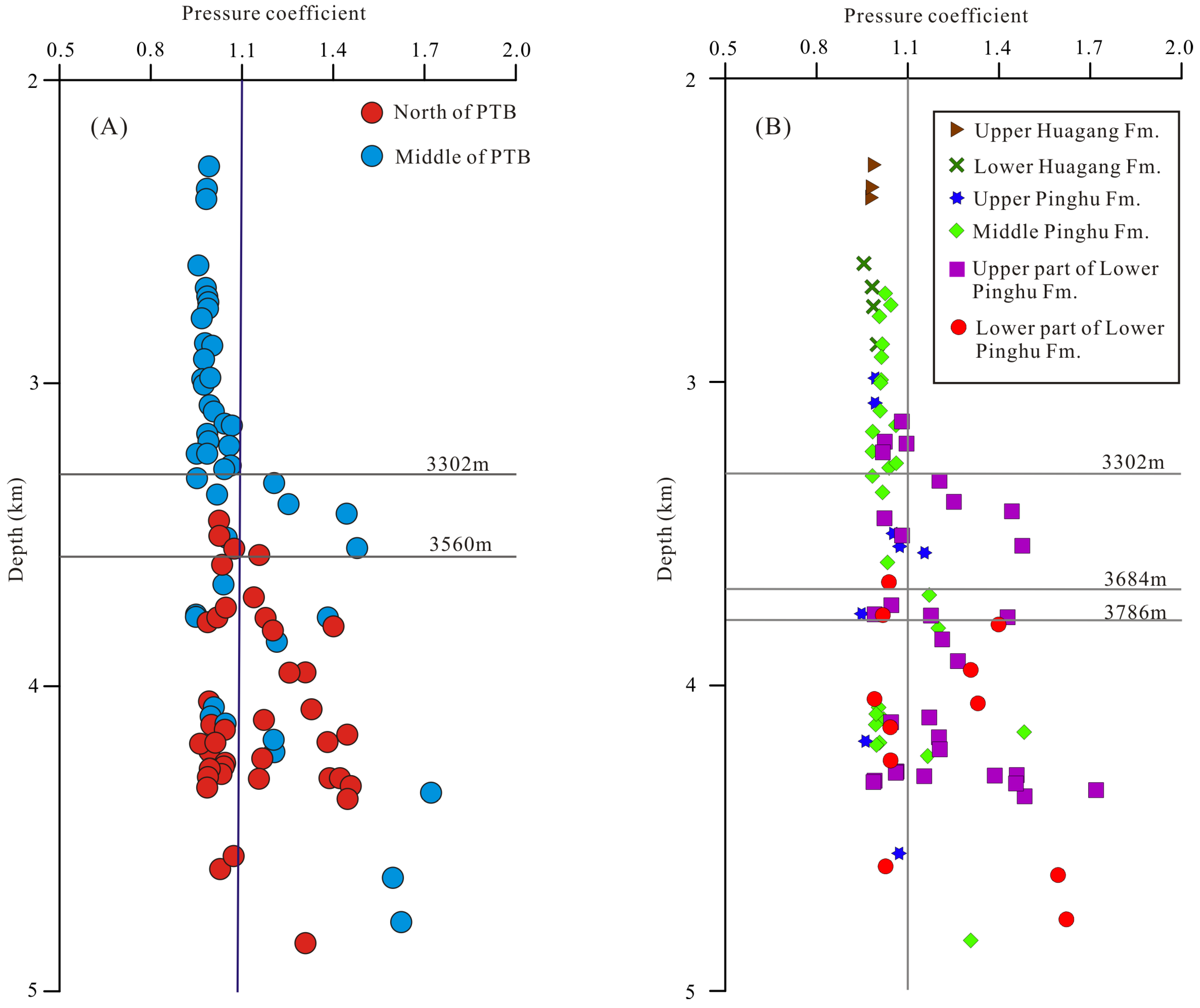
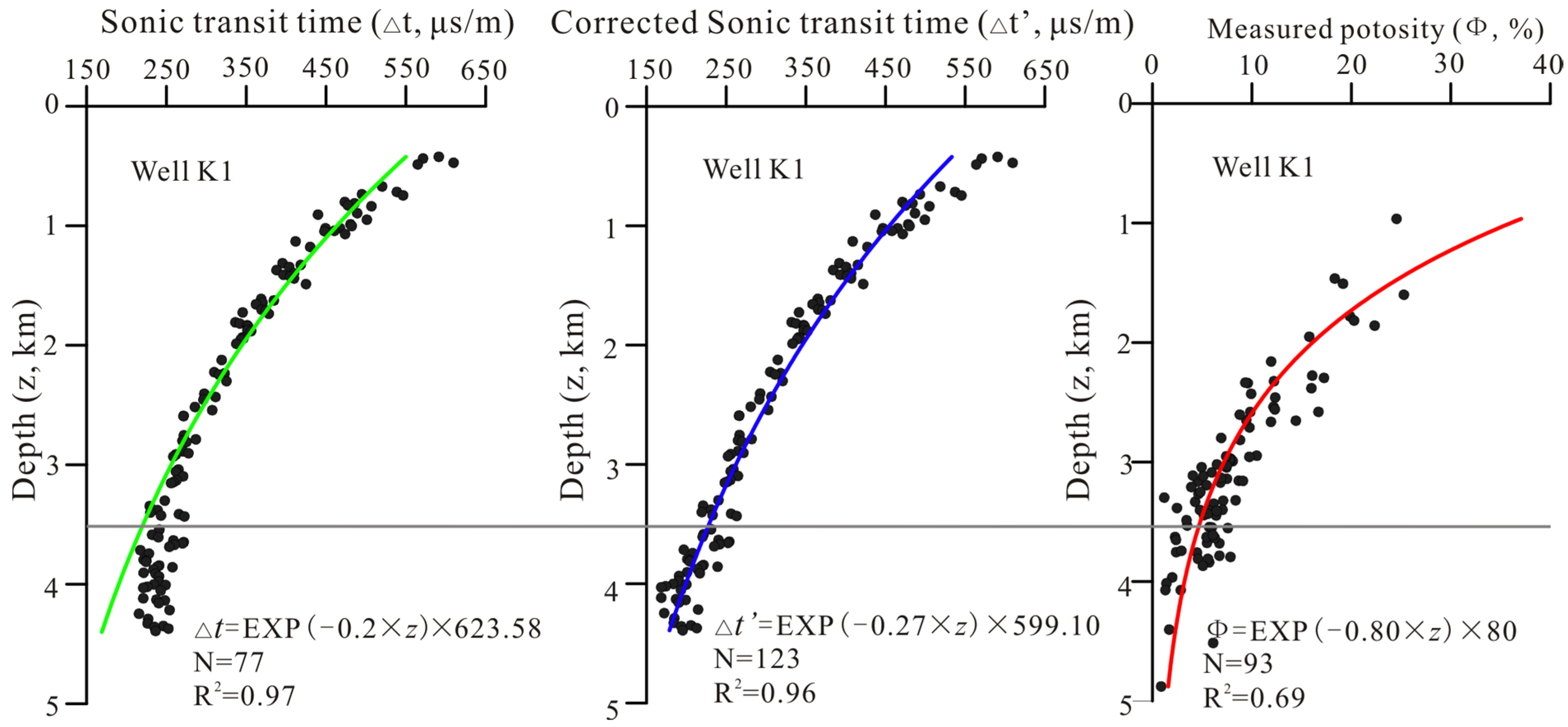

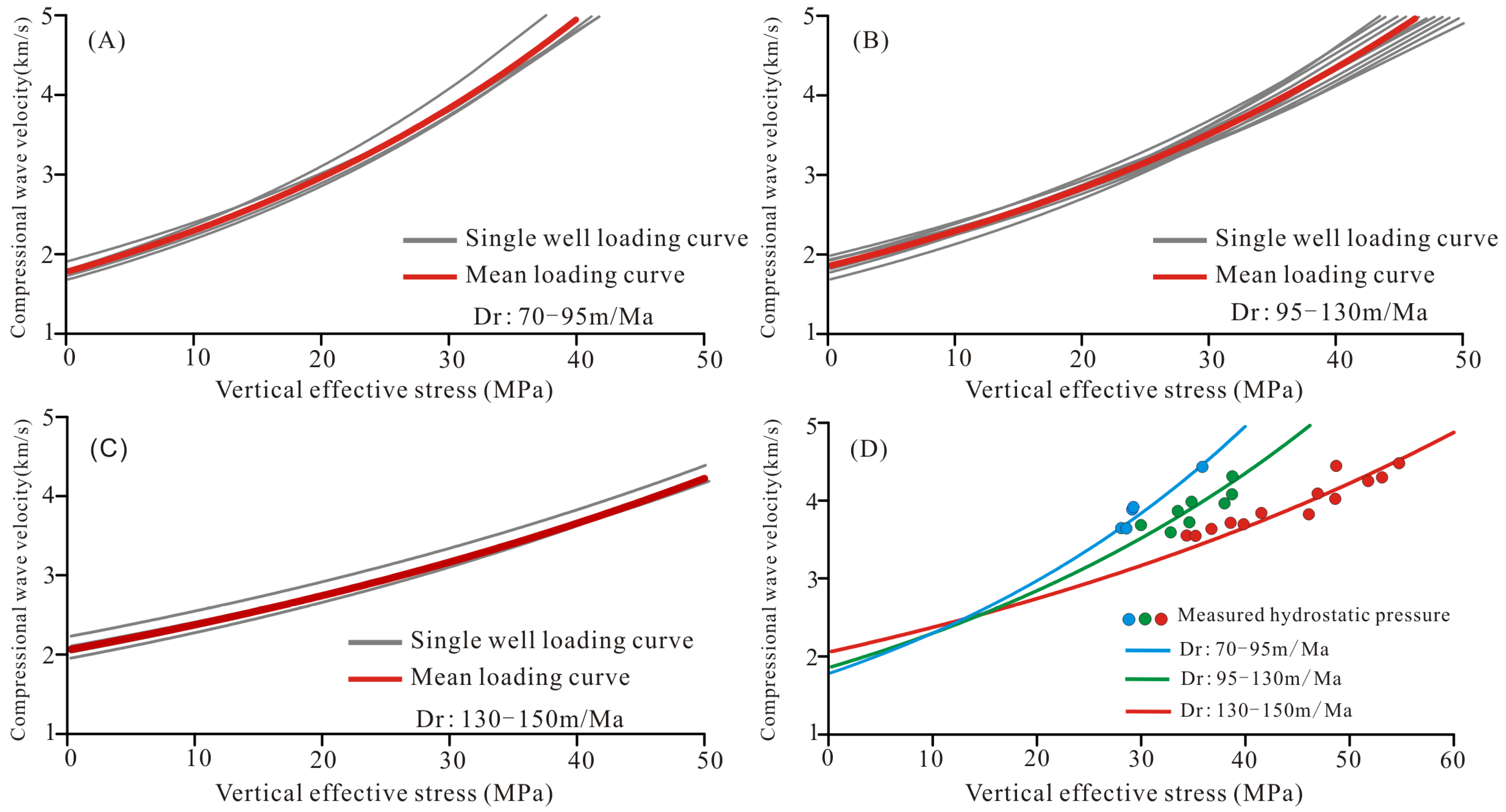


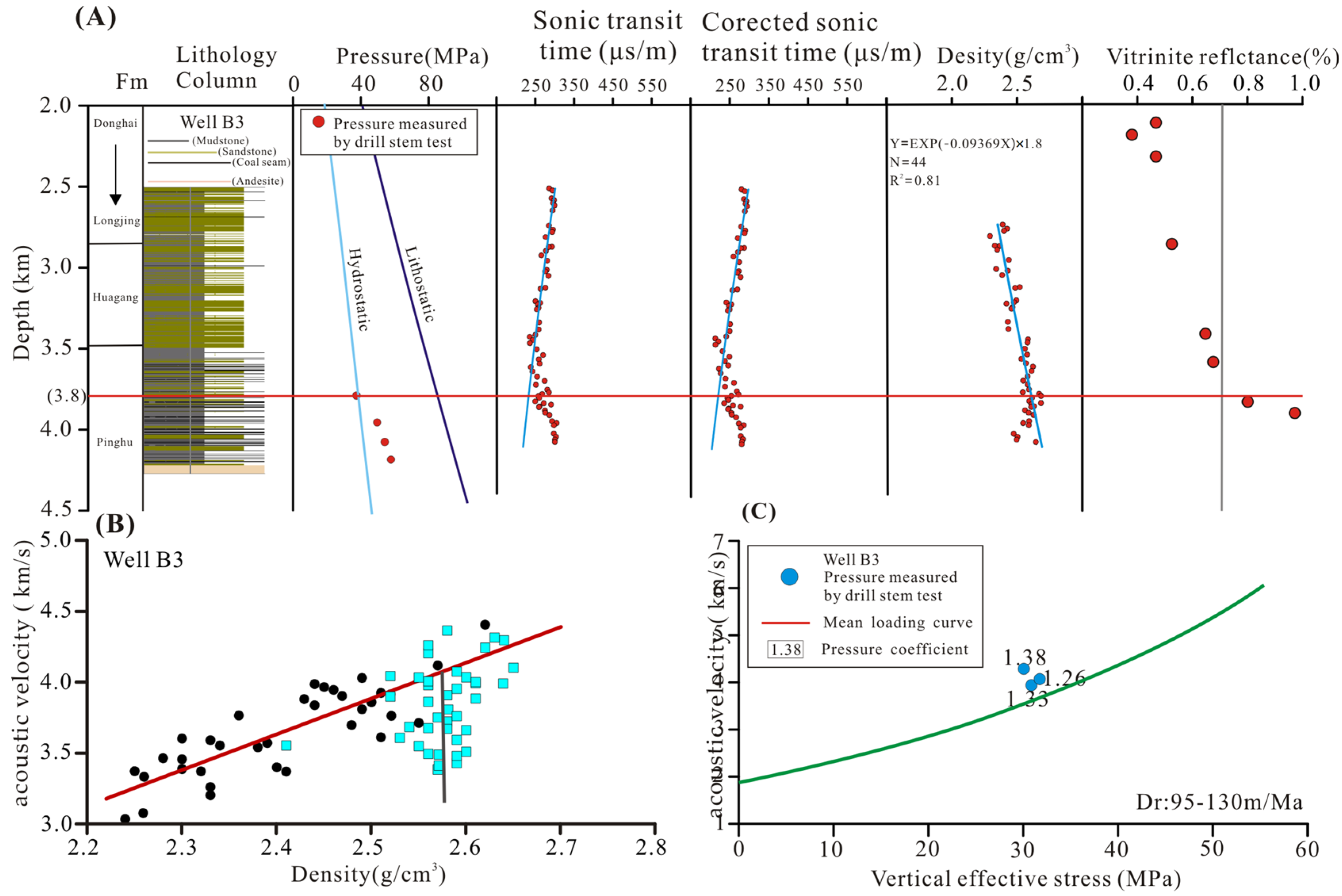

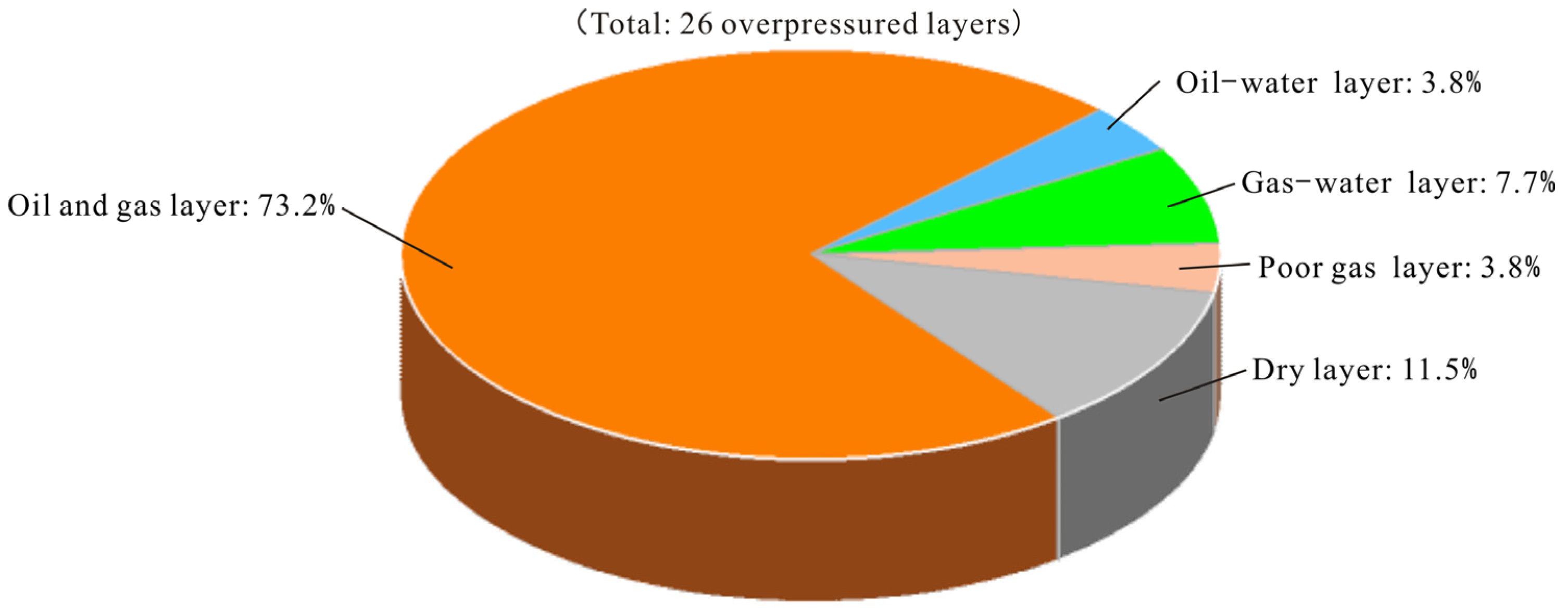

Disclaimer/Publisher’s Note: The statements, opinions and data contained in all publications are solely those of the individual author(s) and contributor(s) and not of MDPI and/or the editor(s). MDPI and/or the editor(s) disclaim responsibility for any injury to people or property resulting from any ideas, methods, instructions or products referred to in the content. |
© 2023 by the authors. Licensee MDPI, Basel, Switzerland. This article is an open access article distributed under the terms and conditions of the Creative Commons Attribution (CC BY) license (https://creativecommons.org/licenses/by/4.0/).
Share and Cite
Li, J.; Qin, D.; Yin, W.; Wang, X.; Dai, Y.; Shi, H.; Fan, C. The Origin of Overpressure in the Pinghu Tectonic Zone of Xihu Depression and Its Relationship with Hydrocarbon Accumulation. Energies 2023, 16, 8055. https://doi.org/10.3390/en16248055
Li J, Qin D, Yin W, Wang X, Dai Y, Shi H, Fan C. The Origin of Overpressure in the Pinghu Tectonic Zone of Xihu Depression and Its Relationship with Hydrocarbon Accumulation. Energies. 2023; 16(24):8055. https://doi.org/10.3390/en16248055
Chicago/Turabian StyleLi, Jian, Dewen Qin, Wensun Yin, Xiaopei Wang, Yong Dai, Hui Shi, and Changyu Fan. 2023. "The Origin of Overpressure in the Pinghu Tectonic Zone of Xihu Depression and Its Relationship with Hydrocarbon Accumulation" Energies 16, no. 24: 8055. https://doi.org/10.3390/en16248055
APA StyleLi, J., Qin, D., Yin, W., Wang, X., Dai, Y., Shi, H., & Fan, C. (2023). The Origin of Overpressure in the Pinghu Tectonic Zone of Xihu Depression and Its Relationship with Hydrocarbon Accumulation. Energies, 16(24), 8055. https://doi.org/10.3390/en16248055




